 The Common Core State Standards Initiative, a recent effort to standardize math and English curricula across the nation that is better known simply as “Common Core,” has generated a growing opposition. [1]
The Common Core State Standards Initiative, a recent effort to standardize math and English curricula across the nation that is better known simply as “Common Core,” has generated a growing opposition. [1]
Some of this opposition comes from the left. For instance the Chicago Teachers Union (CTU), which since its successful 2012 strike has become the heart and soul of left-wing teacher unionism in its militant opposition to Mayor Rahm Emmanuel’s neoliberal education reform efforts, adopted an official resolution in 2014 in opposition to Common Core. CTU and teachers across the nation argue that Common Core ramps up the national obsession with testing, which not only helps destroy teacher autonomy but also has deleterious effects on students. As CTU President Karen Lewis argues: “high-stakes standardized testing is designed to rank and sort our children and it contributes significantly to racial discrimination and the achievement gap among students in America’s schools.”
Left-leaning teachers are not alone in their hostility to Common Core. In fact it has become something of a right-wing bugaboo as conservatives disparagingly call it “Obamacore.”
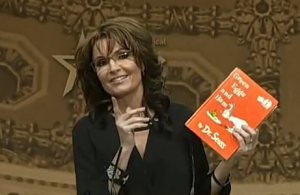 Conservative opposition to Common Core was present from the outset, made evident by the fact that Rick Perry’s Texas and Sarah Palin’s Alaska refused to implement Common Core when it was first introduced in 2009. This, even though Obama’s “Race to the Top” policies included hefty monetary incentives to those states that adopted it. More recently, in response to a growing right-wing movement against Common Core, additional states have joined Texas and Alaska in opting out of Common Core.
Conservative opposition to Common Core was present from the outset, made evident by the fact that Rick Perry’s Texas and Sarah Palin’s Alaska refused to implement Common Core when it was first introduced in 2009. This, even though Obama’s “Race to the Top” policies included hefty monetary incentives to those states that adopted it. More recently, in response to a growing right-wing movement against Common Core, additional states have joined Texas and Alaska in opting out of Common Core.
Following such trends, several candidates for the Republican presidential nomination have made opposition to Common Core a key campaign message. Ted Cruz argues that “we should repeal every word of Common Core” because the federal government has no constitutional mandate to meddle in education. Mike Huckabee, originally a Common Core proponent, recently told an audience in Iowa that Common Core “has morphed into a frankenstandard that nobody, including me, can support.” And Chris Christie, another early Common Core supporter, has also reversed his stance and threatened that New Jersey will abandon Common Core.
Such seeming hysteria might be surprising given that Common Core’s standards are ideologically innocuous in terms of content. Yet it is important to remember that conservative opposition to education reform is not new. In fact, it has been a common feature of educational politics since the early twentieth century, when the American curriculum slowly but surely merged with a progressive curriculum innovated by the philosopher John Dewey and a host of other progressive pedagogical thinkers. The fact that Common Core is decidedly un-progressive and that it has its roots in a neoconservative education reform movement that has been reshaping American schools for over 30 years is lost on conservatives and represents the historical irony of conservative opposition to Common Core.
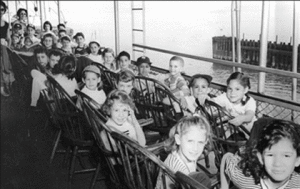 Progressive education in its origins was a secular movement that sought to distance the national curriculum from the ecumenical Protestantism that had been its organizing force since Horace Mann’s common school movement in the early nineteenth century. Not surprisingly, progressives clashed with religious fundamentalists over an assortment of curricular items, particularly over mandatory Bible reading and over whether to teach Darwin’s evolutionary science or creationism—a collision that famously sparked the 1925 Scopes Monkey Trial.
Progressive education in its origins was a secular movement that sought to distance the national curriculum from the ecumenical Protestantism that had been its organizing force since Horace Mann’s common school movement in the early nineteenth century. Not surprisingly, progressives clashed with religious fundamentalists over an assortment of curricular items, particularly over mandatory Bible reading and over whether to teach Darwin’s evolutionary science or creationism—a collision that famously sparked the 1925 Scopes Monkey Trial.
By the end of the 1930s, to the dismay of conservatives, the progressive curriculum had become even more prevalent in many schools across the country. Progressive educator Harold Rugg’s popular textbooks, Man and His Changing Society, which incorporated the scholarship of historian Charles Beard, who subjected the American past to the paradigm of class conflict, were assigned to more than five million students in five thousand school districts. But conservative resistance to progressivism grew as well, made evident by the successful movement in the early 1940s to remove Rugg’s textbooks from schools.
By the early Cold War, conservative educational vigilantism, aided by McCarthyism, had turned back the tides of the progressive curriculum across the nation. In the 1950s, as thousands of progressive educators learned the hard way, mere mention of John Dewey was likened to summoning the ghost of Karl Marx. [2]
But despite its reach, Cold War conservatism only kept a lid on liberalizing curricular trends for a short time. The cultural earthquakes of the 1960s shattered the short-lived, anti-progressive consensus formed in the early Cold War. By the 1970s, American conservatives, particularly religious conservatives, had valid reason to believe that the nation’s public schools no longer represented their moral vision.
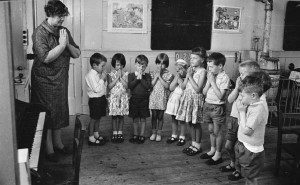 The Supreme Court enshrined secularism in the schools with a series of landmark cases, most famously the 1962 Engel v. Vitale ruling that New York’s twenty-two word school prayer violated the First Amendment’s Establishment Clause. In polls taken since the 1960s the school prayer ruling has routinely ranked as the most unpopular Supreme Court decision, particularly among conservative Christians, many of whom considered Engel the beginning of American civilization’s downfall.
The Supreme Court enshrined secularism in the schools with a series of landmark cases, most famously the 1962 Engel v. Vitale ruling that New York’s twenty-two word school prayer violated the First Amendment’s Establishment Clause. In polls taken since the 1960s the school prayer ruling has routinely ranked as the most unpopular Supreme Court decision, particularly among conservative Christians, many of whom considered Engel the beginning of American civilization’s downfall.
Post-1960s curriculum trends also distressed religious conservatives. In science, teachers slowly overcame the perpetual taboo against teaching evolution. In health classes, honest discussion of sex came to replace moral exhortation. And in social studies classes, students were increasingly challenged to clarify their own values, independent of those instilled by parents and churches. A popular anthropology curriculum created for elementary students by psychologist Jerome Bruner in the early 1970s—MACOS, or, “Man: A Course of Study”—exemplified the secularization of the curriculum. During a MACOS unit students examined the Netsilik Eskimo culture, including their supposed practice of killing the elderly, in order to understand, yet not judge, cultural differences. Such relativistic lesson plans became the norm.
In 1969, the National Education Association (NEA)—the nation’s largest teachers union—advocated what it called the “inquiry method” of instruction, a Socratic discussion technique that would allow students “to view knowledge as tentative rather than absolute,” permitting them “to see that value judgments cannot be accepted solely on faith.” Opposing such learning became a rallying cry for Christian culture warriors. “Your tax dollars are being used,” Jesse Helms cautioned recipients of a 1976 fundraising letter, “to pay for grade school courses that teach our children that cannibalism, wife swapping, and the murder of infants and the elderly are acceptable behavior.”
Many teachers across the country did not warm to the progressive pedagogies inspired by the liberation movements of the 1960s. But such radicalism fairly represented a key segment of the nation’s educational leadership. The nation’s teacher’s colleges increasingly assigned Brazilian radical Paolo Freire’s 1970 book, The Pedagogy of the Oppressed
—about how teachers had more to learn from their oppressed students than vice versa.
Taken as a whole these developments helped spur hundreds of thousands of Christians to migrate out of public schools, leading to a massive expansion of Christian day schools. In 1977, the three largest Christian day school networks combined enrolled approximately 350,000 students. By 1992, this number had mushroomed to an estimated 775,000 students; by 2002, there were over 880,000 Christian day school students.
Many religious conservatives sent their children to Christian day schools because they loathed the secularism of the public schools. Such secularism, Christian Right educators believed, was on display not only in biology classes that taught evolution and in social studies classes that taught anthropological curricula such as MACOS. It was also demonstrable in history courses, where students were increasingly taught to think about the past through a lens that challenged the historical inevitability central to Christian fundamentalist and American exceptionalist perspectives. In contrast, students in Christian day schools were taught to accept it on faith that things happened by God’s design. Bob Jones University Press, which met the increasing demand for providential history textbooks presented by the growth of the Christian day school movement, published books, such as U.S. History for Christian Schools, inspired by biblical truths.
In addition to a preference for such religious content, many conservative parents also favored the strict instruction style of the Christian schools. Since conservative evangelicals believed humans were inherently sinful, they often thought children needed draconian discipline in order to become godly. Such pedagogical authoritarianism stood in marked contrast to child-centeredness, a pedagogy that, to varying degrees, had helped shape public school sensibilities since the early twentieth-century.
Child-centeredness was premised on the idea that children instinctively knew what was best for themselves and should thus should have some say, directly or indirectly, in their curriculum. Hoary right-wing assaults on John Dewey were as much about his child-centered philosophy as they were about his political liberalism. More to the point, conservatives conceptualized child-centeredness as a branch of liberalism, which was reasonable since Dewey himself theorized that the liberal value of “open-mindedness means retention of childlike attitude.”
As the antidote to Deweyan child-centeredness, many Christian educators turned to Rouhas John Rushdoony and his 1985 book, Philosophy of the Christian Curriculum. Rushdoony described the implications of a child-centered pedagogy as follows: “Instead of being accountable to God, parents, teachers, and society, the pupil can assert that God, parents, teachers and society are responsible to him.” Rushdoony’s theocratic doctrine that God’s laws took precedent over man’s laws doubled as a strike against child-centeredness. Since children had to be made to conform to the immutable truth of God, their subjective longings had to be squashed.
In the 1980s and 1990s, a growing number of religious conservatives not only pulled their children out of public schools, but out of schools altogether, as the ranks of the homeschooled grew precipitously. In 1985, there were about 250,000 homeschooled children. By 1999, well over one million American children were schooled at home. An estimated 90 percent of those who homeschooled their children were evangelicals, who increasingly believed they were commanded by the Bible to educate their own children.
The upshot of this considerable movement out of the public schools was that, whereas the de facto national curriculum remained liberal—a product of the progressive reforms that were enshrined during the 1960s—a shrinking percentage of the nation’s schoolchildren were exposed to it. In this way, the Christian Right ultimately reduced the impact of secular schools, not by changing them to reflect their values, but by abandoning them altogether.
Of equal consequence, religious conservatives helped foster the popular notion that the public schools were in crisis. Neoconservative education reformers like William Bennett, Secretary of Education during Reagan’s second term in the White House, used this perceived crisis to their advantage.
Resistance to liberal curricular reform reveals the perplexities of a conservative movement that housed both religious conservatives and neoconservatives. Religious conservatives have long railed against the state as an agent of secularism. Yet since the 1980s they have formed alliances with neoconservatives who sought to reshape the national curriculum more to their liking from within the hallowed halls of government. This contradictory historical development underscores the ironies of the right-wing assault on Common Core, which, as we shall see, has roots in the neoconservative education reform movement.
Although neoconservatives sympathized with Christian Right concerns about the role of religion in society, their primary complaint with the nation’s educational system was that standards were deteriorating. This resulted in a neoconservative approach to school reform distinct from the Christian Right. Neoconservatives pushed for a set of centralized national educational reforms. Christian conservatives, on the other hand, sought to break all ties with a federal educational establishment that they deemed hopelessly secular.
Unlike Christian conservatives, neoconservatives had success with their key reform efforts. This was especially true of their push for national standards, which they believed would compel schools to return to basic education and away from progressive pedagogy. In making the case for standards, neoconservatives counted on support from powerful economic and political actors. The American elite almost uniformly understood the state of American public education through the lens of A Nation at Risk, a widely publicized 1983 report that argued American schools, by failing to offer a basic education, undermined the nation’s ability to compete in an increasingly global economy.
Attempts to create a national curriculum in the wake of A Nation at Risk have led to heated controversies grounded in a central irony that helps us understand conservative resistance to Common Core. The neoconservative push for standards engendered even more conflict over the curriculum because progressive educators were positioned by their professional standing to direct the production and implementation of such standards. Indeed, even though millions of religious conservatives rejected the content taught in the public schools, conservatives continued to lose the battle for the American curriculum, which persisted in reflecting a post-1960s paradigm: secular, relativistic, and multicultural. At a superficial level we see this in the Common Core English standards, which emphasize “critical thinking skills,” a nod to progressive child-centered principles that has become a dog whistle for right-wingers.
What goes less noticed is that the Common Core English curricular framework also prioritizes the reading of technical manuals over and above the reading of literature, meaning that the standards are consistent with an education reform movement that is first and foremost neoliberal in its mission to better train a workforce.
In short, the education reforms that conservatives angrily rail against emerged from the neoconservative education reform movement and have mostly neoliberal implications. If anyone should be pissed off it should be leftists. Which adds to the historical irony of conservative opposition to Common Core.
[1] Parts of this essay are based on sections of my recent book, A War for the Soul of America: A History of the Culture Wars
.
[2] For more on this see my first book, Education and the Cold War: The Battle for the American School.

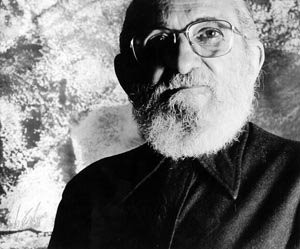
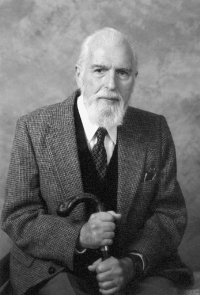
9 Thoughts on this Post
S-USIH Comment Policy
We ask that those who participate in the discussions generated in the Comments section do so with the same decorum as they would in any other academic setting or context. Since the USIH bloggers write under our real names, we would prefer that our commenters also identify themselves by their real name. As our primary goal is to stimulate and engage in fruitful and productive discussion, ad hominem attacks (personal or professional), unnecessary insults, and/or mean-spiritedness have no place in the USIH Blog’s Comments section. Therefore, we reserve the right to remove any comments that contain any of the above and/or are not intended to further the discussion of the topic of the post. We welcome suggestions for corrections to any of our posts. As the official blog of the Society of US Intellectual History, we hope to foster a diverse community of scholars and readers who engage with one another in discussions of US intellectual history, broadly understood.
This is an important article. I had the (mis) fortune to experience one of those Christian day schools in the late 1970s for a year – until I was kicked out over political and religious conflicts with other students and faculty.
Good post. Having followed educational debates as a lay person since the 1950’s I’d add:
* conservatives blamed progressive education for US deficiencies in education after Sputnik, which was treated as revealing deficiencies in US education and society vis a vis the Soviet Union.
* some innovations supported by progressives such as “new math” of the 60s and open classroom architecture of the 70[s failed
* while ideology and religion played an important role, race was/is also important. Southern white conservatives fled the public schools in the Deep South when court-ordered integration started to bite. I assume they’re run on conservative lines.
* conservatives opposed federal aid to education from the 1950’s on, fearing national control of education. So rather than fixing the problems in the 50’s with money, as liberals wanted, they proposed individual action/moral regeneration. While the push for educational vouchers seems to have faded, charter schools and the idea of choice and competition seem to be current proposals.
Yes to all of this Bill. I deal with much of this in my first book (Education and the Cold War).
Great article. As I’m sure you’re aware, there are some conservatives such as Michael Petrilli and Bill Bennett who have tried to alert their conservative comrades to the “least-bad” nature of the CCSS. http://www.weeklystandard.com/blogs/repairing-conservative-school-reform-coalition_735091.html?page=1
Indeed, Adam. But even if conservatives could be convinced that Common Core matches their ideological suppositions they might oppose it on the grounds that it violates parental rights. As a conservative critic of Bennett’s wrote in the National Review in 1987: “who can guarantee that Deweyites will never again replace Bennettites as arbiters of good citizenship?”
Ironically, the liberal homeschool system established in Kansas to allow Christianists to escape the public school system is also facilitating progressives’ migration away from neoliberal miseducation. At least in a few cases…
Homeschooling is one of those issues where a progressive, sort of anarchist left comes together with the Christian Right in ironic ways.
This is a nice overview, Andrew, but I wonder if I might raise the point that Adam does from the Left instead of the Right. That is: given the degree to which right-wing activists continue to strong-arm traditional subject-matter into AP and state curricular standards, shouldn’t those on the Left be grateful that the Common Core remains primarily skills-based and designed by educators? It could be a lot worse, I suspect, if more conservatives started demanding particular content to be taught. Would you accept the argument that the current standards rely (mostly) on teachers’ discretion for content, and thus inherently favor professional/progressive approaches, even if the overall structure is neoliberal?
“and on the third day, God created the Remington bolt action rifle so that we could fight the dinosaurs and the homosexuals.”
How to have better education in the US: 1) pay teachers a livable wage so that we can get some good teachers 2) have universal federal curricula and universal federal testing 3) get rid of grade levels and instead enroll children in vertically aligned classes–when a child finished a class they move to the next class 4) free undergrad educatin for all.